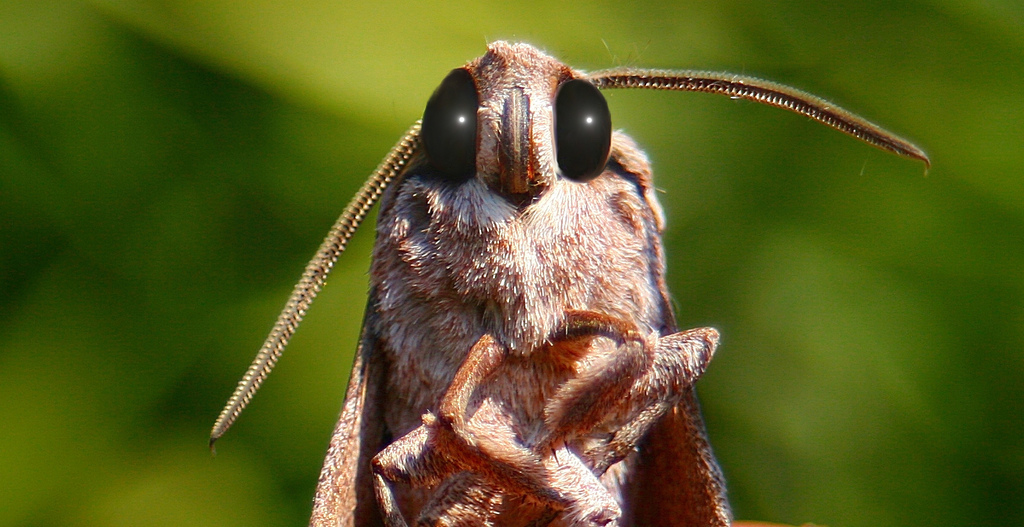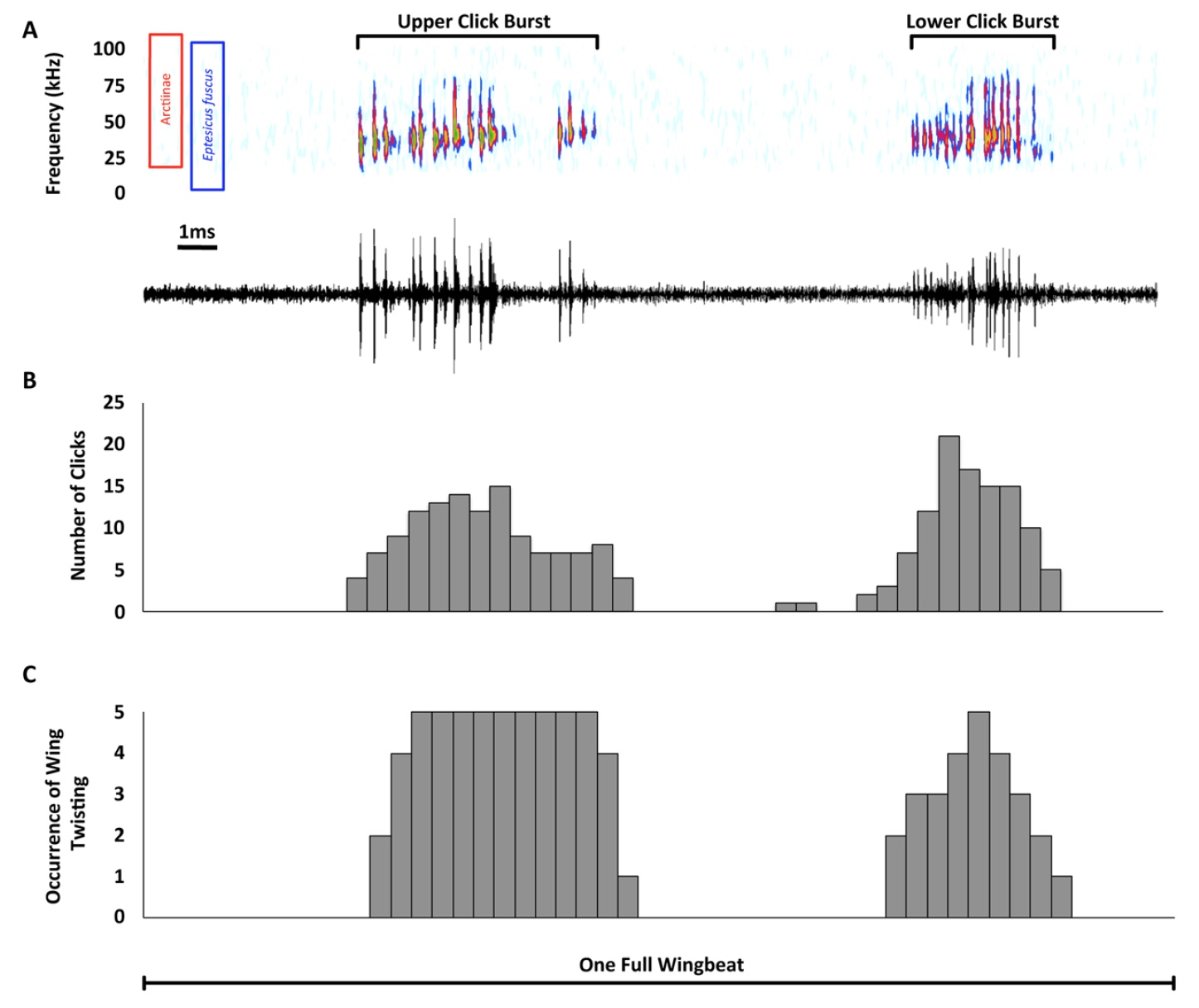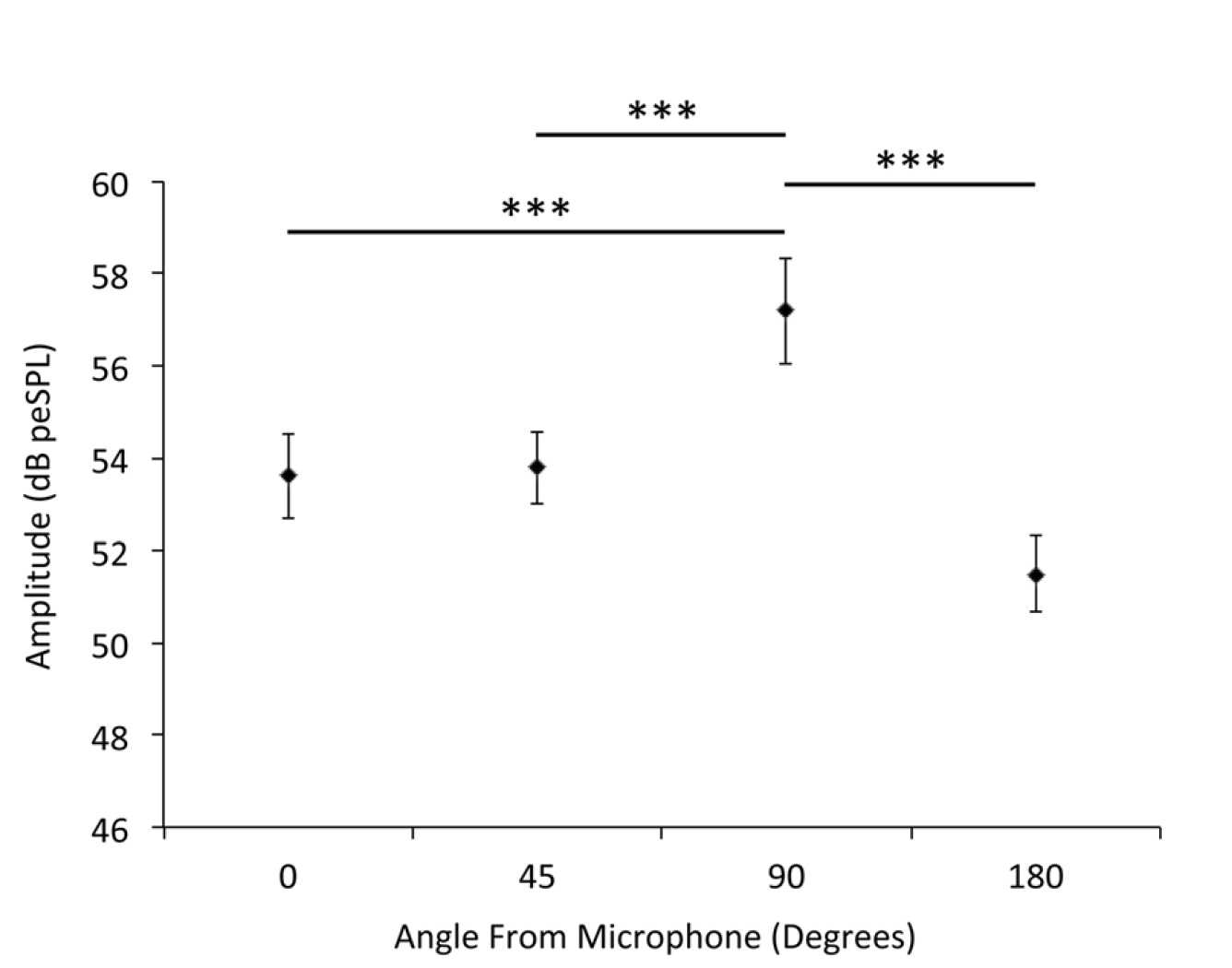Sonic diversion: a mechanism for generating ultrasonic clicks in night moths as protection against bats

Large fangs, strong jaws, speed, incredible vision and much more are features that predators of all breeds and stripes use in the hunt process. The prey, in turn, also does not wish to sit on its legs (wings, hooves, flippers, etc.) and comes up with more and more new ways to avoid unwanted close contact with the predator's digestive system. Someone becomes a master of camouflage, someone is smeared with poison, and someone throws his insides into the face of the offender (hello sea cucumbers). But there are those whose defense mechanism is not visible and not even heard for us. Moths are a favorite dish of bats. For millions of years, both those and others polished their skills in ultrasound. Mice use it to search for preys, and moths to find a predator. But "forewarned means armed" is not enough for moths, because they have developed the ability to create "radio interference" that violates the ultrasonic "vision" of bats. How do they do it, given their 100% deafness, and how effectively does this help them avoid death? We will look for answers in the report of the research group. Go.
The basis of the study
When you hunt at night, you need to have either very good eyesight, or a sharp nose, or an excellent ear. The bats chose the latter, in a sense. Using echolocation is very beneficial for bats. First, night-time hunting limits the number of potential hazards and competition for food. Secondly, at night there are a lot of insects, that is, the chances of eating after 18:00 are much higher.
Bats produce ultrasound of a different frequency range depending on the species. At the same time, even one type of frequency varies over time: at the beginning of 130-150 kHz, and then 30-40 kHz.

During the hunt, bats "emit" ultrasonic waves that "crash" into the surrounding objects, including the possible prey. The reflected waves are captured by the bat and it can maneuver among obstacles or focus the attack on the prey precisely.
When evolution handed out talents, moths also did not stand aside. They are capable of generating ultrasonic interference or false signals, convincing the bat of their inedibility. Some species of moths use stridulation. This unusual term is very simple to explain: remember how crickets in the summer "sing"? This is stridulation. Cicadas are another bright, more precisely voiced master of this talent.
An alternative source of sounds for moths can be percussion “castanets” - modified genital structures (yes, scientists called sound genitals, castanets; did you think people of science are not creative?).
However, most species of moths use timbals (not to be confused with cymbals) - special cuticle formations on the surface of the body with an air cushion underneath.
In today's study, scientists paid attention to the genus of moths Yponomeuta, in which most species (and there are about a hundred) have an unusual formation in their arsenal - a translucent section on wings without scales between the veins Cu 1b
and Cu 2. Scientists have discovered that a number of crests are attached to this area, which may indicate the involvement of a given area in sound formation through stridulation (possibly).

The image on the left (A) white outlines the region of translucent formation, and the image on the right (B) SEM images of the same area.
Scientists have set themselves the task of answering a number of questions: this translucent section produces sound or not, what are its acoustic properties (if it does all the same) and how these sounds are used by the moth in its life.
The main subjects who were supposed to help find answers to the above questions were individuals of two types of moths - Y. evonymella and Y. cagnagella.

Find the 10 differences: Y. evonymella (left) and Y. cagnagella (right).
The subjects were taken from the wild at the larval stage. The formed pupae were kept in special containers 297 x 159 x 102 mm at a temperature of 21 ° C.
Observation results
Scientists recorded free and fixed flights of subjects: 15 free and 2 fixed flights of Y. evonymella; 9 fixed flights Y. cagnagella. During the flight, the moths produced the same ultrasonic clicks during each flap of the wings (graphs below).

Spectrogram of ultrasonic clicks during one stroke of the wings of a moth.
On the spectrogram above you can see multicolored areas. The first (red) is the frequency range of sounds produced by the moths of the subfamily Arctiinae against bats. And the second (blue) is the auditory range of Eptesicus fuscus bats.
A total of ultrasonic pulses were recorded during the stroke, two: one at the beginning of the stroke and the second at the end of the stroke. It was during the first pulse that the frequency of clicks was greater. The number of clicks per pulse, judging by the observations, coincides with the number of bands on the translucent section. For Y. evonymella, the average value of clicks per 1 ultrasonic pulse is 12.6 ± 1.7, and there are 11 bands on the translucent area (note the numbering on the wing's SEM image).
Next, the scientists removed the timbals (area 260 x 800 microns) from 12 Y. evonymella specimens and recorded sounds during their flight before and after removal. The number of clicks per 100 ms was also calculated, which is equivalent to about 3 wing strokes.
Seven individuals after the removal did not make clicks, eight - only 1 click, and four made clicks, but in a smaller number and with a lower amplitude. As it turned out, this four of the field of timbals (translucent areas) was not completely removed, therefore they were excluded from further analysis.
Experimentally, scientists confirmed that moths of both test species produce sounds. Now they were decided to be tested by ear (20 individuals of the species Y. evonymella and 4 individuals of the Y. cagnagella).
Scientists reproduced ultrasound while the subjects flew freely in the test room. None of the individuals responded to this. The experiment was repeated, but dividing individuals by species into separate containers, where they were at rest. And again, no one even moved.
At the same time, placing 10 Y. evonymella specimens in one flight chamber, the scientists saw the test subjects' reaction to each other. And it was the same as in previous tests, that is, no.
And what about the stridulation? The scientists checked if there were signs of friction of any parts of the body to produce sounds for the tested moths. And as it turned out, there are none. Note the movements of the wings of the moth during a controlled flight in the video below.
In this video, we can see what changes occur in the position of the wings and their parts during the stroke.
With the investigated translucent area, no friction of other parts of the body of the moth was observed at any moment of the stroke. But the clicks somehow appear. And this happens through the rotation of the rear wing along its axis from the base to the tip during the upper and lower phases of the wing stroke.
A detailed examination of this process showed that during supination (rotational movement of the limb) at the beginning of the stroke, the anal and jugal parts of the wing fold down relative to its front part along the claval groove.
Flying moth, side view.
This process runs from the top to the base of the wing, so the translucent area is also involved. During this, ultrasonic clicks occur.

The table above shows the results of the analysis of ten clicks fixed in the transverse direction (90 °) for all subjects (14 Y. evonymella and 9 Y. cagnagella). The spectral parameters, duration and amplitude of clicks were set.
In addition, the analysis and clicks (5 for each of 8 individuals) of a horizontal orientation (0 °, 45 °, 90 ° and 180 °) were carried out.

The average sound level of eight Y. evonymella test subjects recorded from four directions: 0 ° - microphone in front of the moth, 45 ° - in front from the side, 90 ° - in the side, 180 ° - in the back.
No special differences were found: 0 ° and 45 °, Z = 0.3, p = 1.0; 0 ° and 180 °, Z = -2.3, p = 0.13; 45 ° and 180 °, Z = -2.4, p = 0.11.

Also, scientists have calculated at what distance bats will hear moth clicks depending on the position. The results are as follows: 6.0 ± 0.4 m at 0 °, 6.5 ± 0.4 m at 45 °, 7.9 ± 0.7 m at 90 ° and 5.6 ± 0.4 m at 180 °. These indicators are displayed in the form of a diagram above ( B ).
But in graph A we see the amplitude of the reflected sound, which varies in the range −35 ... −43 dB at frequencies in the range 20 ... 160 kHz.
Here you can listen to the audio recording of moth sounds.
For more detailed acquaintance with the study I strongly recommend to look into the report of scientists .
Epilogue
Evolution can be unprincipled, merciless, strange and even ironic, as the example of the moths shows. Being completely devoid of hearing, these creatures are not devoid of "voice." Using translucent patches on the wings during flapping, moths give out ultrasonic clicks that confuse bats eager for them to feast on.
Such an unusual adaptation is a fact, but it will give rise to quite a few debates on how it was formed, what evolutionary changes moths underwent to develop such a mechanism, and how it all began.
We once again received confirmation that the world is full of amazing creatures that never cease to amaze with their talents, which we had no idea.
And, of course, Friday offtop:
Тут у всех, кто страдает моттефобией (боится мотыльков), наверное сердце остановилось от ужаса.
Благодарю за внимание, оставайтесь любопытствующими и отличных всем выходных, ребята.
Тут у всех, кто страдает моттефобией (боится мотыльков), наверное сердце остановилось от ужаса.
Благодарю за внимание, оставайтесь любопытствующими и отличных всем выходных, ребята.
Thank you for staying with us. Do you like our articles? Want to see more interesting materials? Support us by placing an order or recommending to friends, 30% discount for Habr users on a unique analogue of the entry-level servers that we invented for you: The whole truth about VPS (KVM) E5-2650 v4 (6 Cores) 10GB DDR4 240GB SSD 1Gbps from $ 20 or how to share the server? (Options are available with RAID1 and RAID10, up to 24 cores and up to 40GB DDR4).
VPS (KVM) E5-2650 v4 (6 Cores) 10GB DDR4 240GB SSD 1Gbps until spring for free if you pay for a period of six months, you can order here .
Dell R730xd 2 times cheaper? Only we have 2 x Intel Dodeca-Core Xeon E5-2650v4 128GB DDR4 6x480GB SSD 1Gbps 100 TV from $ 249in the Netherlands and the USA! Read about How to build an infrastructure building. class c using servers Dell R730xd E5-2650 v4 worth 9000 euros for a penny?
